Soil erosion is a topic that often gets overlooked in discussions about agriculture and environmental sustainability, yet it plays a crucial role in the health of our ecosystems. Imagine your garden without the rich, dark topsoil that nurtures your plants—it's a recipe for disaster! This article dives deep into the world of soil erosion, exploring its causes, impacts, and how it affects eco-farming practices. Whether you're a seasoned farmer or just curious about the environment, understanding soil erosion can help you appreciate the delicate balance of nature and the importance of sustainable practices.
Soil erosion refers to the removal of the topsoil layer, which is essential for plant growth. This top layer is like a protective blanket that provides nutrients, supports root systems, and retains moisture. When this layer is stripped away, it can lead to a cascade of negative effects not only on agriculture but also on the environment. To effectively combat soil erosion, we need to grasp the mechanisms driving this process. From the natural forces of nature to the impacts of human activities, understanding these elements is key to mitigating soil loss.
Several factors contribute to soil erosion, and they can be broadly categorized into natural and human-induced causes. Identifying these causes is essential for developing strategies to prevent and manage erosion effectively, especially in eco-farming systems. By understanding what leads to soil erosion, farmers can take proactive measures to protect their land.
Natural elements like rainfall intensity, wind speed, and topography significantly influence soil erosion rates. For instance, heavy rainfall can cause significant runoff, washing away the topsoil. Similarly, strong winds can carry away loose particles, particularly in arid regions. Understanding these factors is vital for farmers to adapt their practices to minimize erosion risks. Here are some of the natural factors that contribute to soil erosion:
Heavy rainfall can lead to increased runoff and soil displacement. When the rain falls too quickly for the soil to absorb it, the excess water starts to flow over the surface, taking the topsoil with it. Farmers need to monitor weather patterns carefully to implement protective measures against erosion during peak rainfall seasons. This could include planting cover crops or building terraces to slow down water flow and allow for better absorption.
Wind erosion is prevalent in arid regions and can strip away topsoil, leaving behind a barren landscape. Imagine a field where the wind howls through, carrying away precious nutrients—this is the reality for many farmers in dry areas. Implementing windbreaks, such as rows of trees or shrubs, and using cover crops can help mitigate this issue and protect the soil. These strategies not only shield the soil but also enhance biodiversity, creating a healthier ecosystem overall.
Human activities such as deforestation, overgrazing, and improper agricultural practices exacerbate soil erosion. When trees are cut down, the soil loses its natural protection, making it more susceptible to erosion. Similarly, overgrazing by livestock can lead to the same outcome, as the vegetation that holds the soil in place is stripped away. Sustainable farming practices are necessary to counteract these effects and preserve soil health. Farmers must recognize their role in maintaining the land and adopt methods that promote soil conservation.
Soil erosion significantly impacts eco-farming by reducing soil fertility and water retention. This is a critical issue for farmers aiming to maintain sustainable agricultural practices and ensure food security. When the topsoil is lost, the nutrients that crops depend on are also diminished, leading to lower yields. Understanding these impacts is crucial for farmers, as they strive to balance productivity with sustainability.
Erosion leads to the loss of essential nutrients in the soil, which directly affects crop yields. Imagine trying to grow a garden in depleted soil; the results would be disappointing at best. Farmers must adopt strategies to replenish soil fertility, such as crop rotation, cover cropping, and organic amendments. These practices not only restore nutrients but also improve soil structure and health, promoting a thriving ecosystem.
Eroded soils have a reduced capacity to retain water, leading to drought stress for crops. This is particularly concerning in regions that already face water scarcity. Implementing conservation techniques, such as contour farming and the use of mulch, can enhance water retention and improve resilience against climate variability. By taking these measures, farmers can better protect their crops and ensure a stable food supply.
Q: What is soil erosion?
A: Soil erosion is the process of removing the topsoil layer, which is crucial for plant growth and agriculture.
Q: What causes soil erosion?
A: Soil erosion can be caused by natural factors like rainfall and wind, as well as human activities such as deforestation and overgrazing.
Q: How does soil erosion affect eco-farming?
A: Soil erosion reduces soil fertility and water retention, which can lead to lower crop yields and increased vulnerability to drought.
Q: What can farmers do to prevent soil erosion?
A: Farmers can implement practices such as crop rotation, planting cover crops, and building terraces to protect against soil erosion.
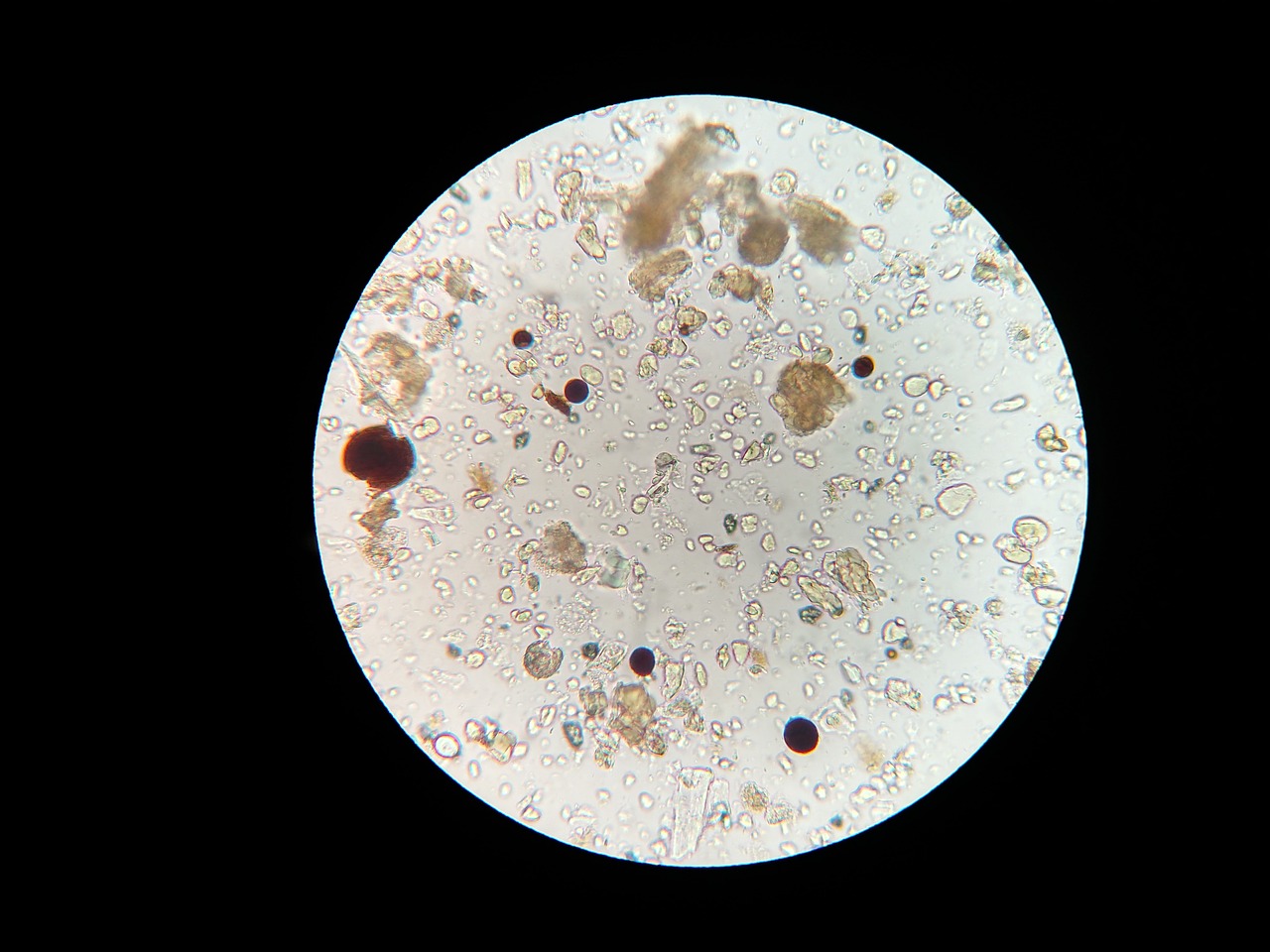
Soil erosion is a critical environmental issue that refers to the removal of the topsoil layer, which is essential for plant growth and agricultural productivity. Imagine the top layer of soil as a rich, nourishing blanket covering the earth, teeming with nutrients that plants need to thrive. When this layer is stripped away, it leaves behind a barren landscape that struggles to support life. Understanding the mechanisms driving soil erosion is vital for anyone involved in agriculture, especially eco-farming, as it directly impacts not only crop yields but also the overall health of our ecosystems.
Soil erosion occurs through various processes, primarily caused by the forces of nature such as water and wind, as well as human activities. The interaction between these forces can be likened to a double-edged sword; while natural elements are necessary for the environment, they can also lead to significant soil degradation if not managed properly. For instance, heavy rains can wash away soil, while strong winds can lift and transport it over long distances. Understanding these processes helps farmers implement effective strategies to combat erosion and protect their land.
Moreover, it’s essential to recognize that soil erosion is not just a local problem but a global one. As we face increasing challenges like climate change and population growth, the pressure on our agricultural systems intensifies. Farmers must adapt to these changes by employing sustainable practices that promote soil conservation. This involves not only understanding the causes of erosion but also recognizing its long-term implications for food security and biodiversity.
To truly grasp the impact of soil erosion, it's helpful to consider its effects on soil structure and health. Erosion can lead to the loss of vital soil components, such as organic matter and essential nutrients, which are crucial for plant growth. Without these elements, the soil becomes less fertile, making it increasingly difficult for crops to flourish. In eco-farming, where the goal is to maintain a balanced ecosystem, this loss can be particularly detrimental.
In summary, understanding soil erosion is not merely an academic exercise; it’s a necessary step for anyone involved in agriculture today. By recognizing the causes, processes, and consequences of erosion, farmers can make informed decisions that will help preserve their land for future generations. As we delve deeper into the topic, we will explore the various causes of soil erosion and how they can be mitigated through sustainable practices.

Soil erosion is a complex phenomenon influenced by a variety of factors, both natural and human-induced. Understanding these causes is essential for developing effective strategies to combat erosion, especially in eco-farming systems. The primary culprits behind soil erosion can be broadly categorized into natural factors and human-induced activities. Each of these plays a significant role in the degradation of soil quality, impacting agricultural productivity and environmental health.
Natural factors include elements like rainfall, wind, and the physical characteristics of the land. For instance, heavy rainfall can lead to increased surface runoff, which washes away the topsoil, while strong winds can lift and carry away loose particles, particularly in dry regions. The topography of the land also plays a crucial role; steep slopes are more susceptible to erosion than flat terrains. Farmers must recognize these natural elements to adapt their practices accordingly, effectively minimizing the risk of erosion.
When it comes to natural factors, the intensity of rainfall is a major player. For example, a sudden downpour can result in rapid water runoff, which has the potential to displace significant amounts of soil. This is especially true in areas where vegetation is sparse, as plants help to anchor the soil in place. Similarly, wind erosion is a serious concern in arid and semi-arid regions, where the lack of moisture leaves soil particles loose and vulnerable to being blown away. Farmers can implement various strategies to combat these natural forces, such as:
On the flip side, human activities have exacerbated soil erosion to alarming levels. Practices such as deforestation, overgrazing, and the use of intensive farming methods strip the land of its protective vegetation. When trees are cut down, the soil loses its natural cover, making it more susceptible to erosion. Overgrazing by livestock can lead to soil compaction and the removal of grass, which further accelerates erosion. Moreover, improper agricultural practices, such as monoculture and excessive tillage, can disrupt the soil structure, making it less resilient to erosion.
To mitigate these human-induced factors, sustainable farming practices are essential. Farmers can adopt methods like crop rotation, agroforestry, and conservation tillage to improve soil health and reduce erosion. These practices not only help to preserve the soil but also enhance its ability to retain moisture and nutrients, creating a more sustainable ecosystem for future farming.
In summary, the causes of soil erosion are multifaceted, involving a combination of natural elements and human activities. By understanding these causes, farmers can implement effective strategies to combat erosion, ensuring the sustainability of their agricultural practices and the health of the environment.
Q1: What is soil erosion?
A1: Soil erosion is the process by which the top layer of soil is removed, often due to wind, water, or human activities. It can significantly impact agricultural productivity and environmental health.
Q2: How does rainfall affect soil erosion?
A2: Heavy rainfall can lead to increased runoff, which washes away the topsoil. This is especially problematic in areas with little vegetation to anchor the soil.
Q3: What are some human activities that contribute to soil erosion?
A3: Deforestation, overgrazing, and improper agricultural practices are major human-induced factors that exacerbate soil erosion.
Q4: How can farmers prevent soil erosion?
A4: Farmers can implement various strategies such as planting cover crops, creating terraces, and using sustainable farming practices like crop rotation to reduce soil erosion.

When we talk about soil erosion, it's crucial to recognize the role of natural factors that can either accelerate or mitigate this process. Understanding these elements is like having a cheat sheet for farmers; it helps them adapt their practices to protect their precious topsoil. One of the most significant natural factors is rainfall intensity. Imagine a heavy downpour; it’s not just a refreshing shower for your garden, but it can also turn into a torrent that washes away the topsoil, leaving behind a barren patch of land. The more intense the rainfall, the greater the risk of soil erosion. Farmers need to keep an eye on weather forecasts to prepare for these events and implement protective measures.
Another critical factor is wind speed. In arid regions, strong winds can act like an uninvited guest at a party, stripping away the topsoil and leaving a dusty mess behind. This phenomenon, known as wind erosion, can be particularly devastating. To combat this, farmers can use windscreens or plant cover crops that act as a shield against the relentless gusts. The topography of the land also plays a significant role; steep slopes can exacerbate the effects of both wind and water erosion. It’s like trying to hold onto your belongings while going down a steep hill—everything tends to slide away!
Moreover, the type of soil itself can influence how susceptible it is to erosion. Sandy soils, for instance, are more prone to being blown away compared to clay soils, which tend to hold together better. This variability means that farmers must tailor their erosion control strategies based on the specific characteristics of their land. Understanding these natural factors is not just about avoiding disaster; it’s about embracing sustainable practices that can lead to healthier ecosystems and more productive farms.
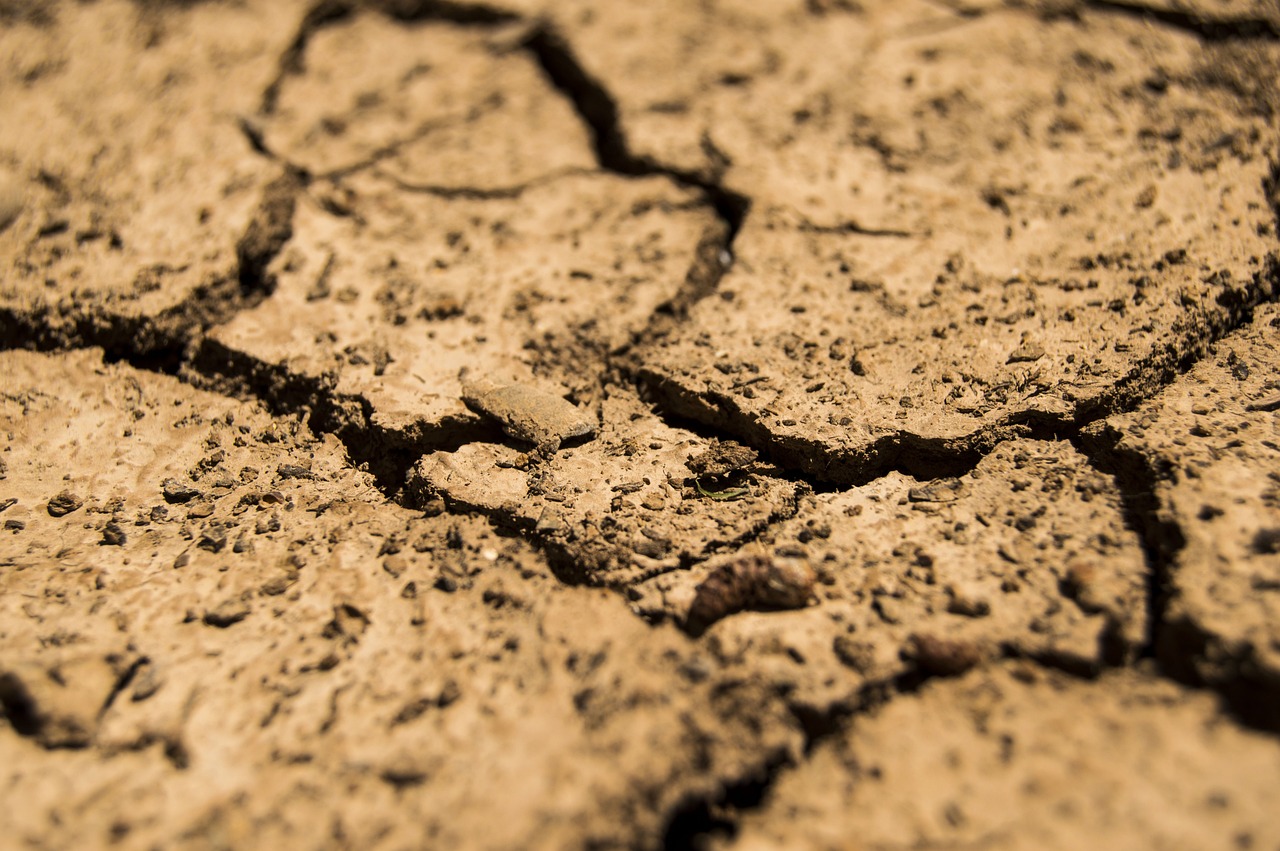
When it comes to soil erosion, rainfall plays a pivotal role that cannot be overlooked. Imagine a heavy rainstorm, where droplets cascade from the sky like tiny missiles, striking the ground with force. This phenomenon can lead to increased runoff, which effectively washes away the precious topsoil that is essential for plant growth. The intensity and duration of rainfall are critical factors that determine how much soil is displaced during such events. For instance, a sudden downpour can create a deluge, causing water to rush over the land and erode the soil at an alarming rate.
Farmers must be vigilant and monitor weather patterns closely. Understanding the relationship between rainfall and erosion allows them to implement protective measures proactively. Some effective strategies include:
Moreover, the timing of rainfall is equally important. If heavy rains occur right after planting, the newly sown seeds may be washed away, leading to crop failure. On the flip side, if rainfall is scarce, the soil may dry out, becoming more susceptible to erosion from wind and other elements. Therefore, farmers need to be equipped with the knowledge of climate patterns and seasonal changes to adapt their farming practices accordingly.
In essence, rainfall is a double-edged sword in the realm of eco-farming. While it is necessary for crop growth, excessive rain can lead to detrimental soil erosion. By understanding and adapting to these rainfall patterns, farmers can protect their soil and ensure sustainable agricultural practices that contribute to the overall health of the environment.
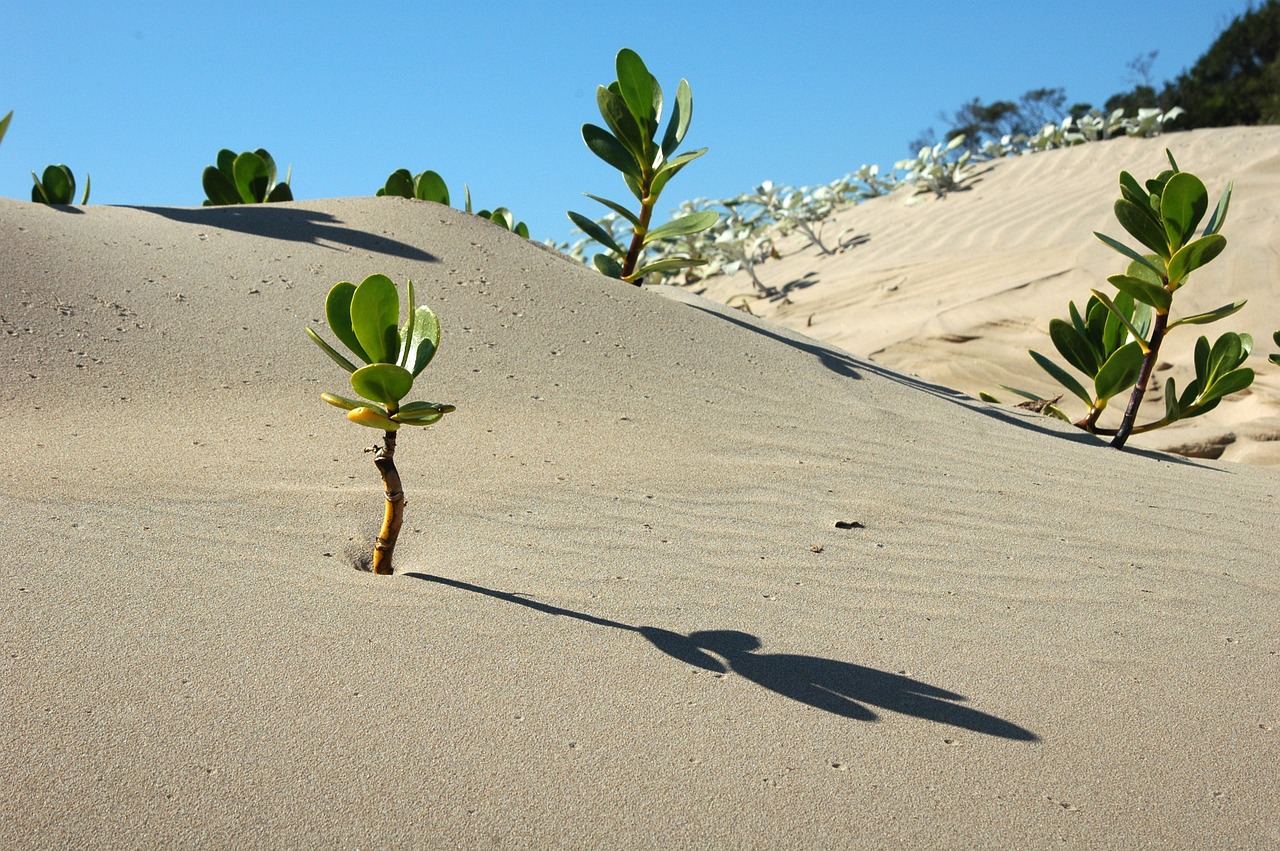
Wind erosion is a significant concern, particularly in arid and semi-arid regions where vegetation cover is sparse. This natural process occurs when strong winds blow across loose, dry, and bare soil, lifting and carrying away the topsoil. Imagine a sandstorm sweeping through a desert; the same principle applies to wind erosion, which can strip away the vital nutrients and organic matter that crops rely on for growth. The consequences of wind erosion can be devastating, leading to reduced soil fertility and increased desertification, making it harder for farmers to sustain their agricultural practices.
To combat wind erosion effectively, farmers can implement several strategies that not only protect the soil but also enhance the overall health of their eco-farming systems. One of the most effective methods is the establishment of windscreens or windbreaks. These can be made of trees or shrubs strategically planted around fields to act as barriers against the wind. By slowing down wind speeds, these natural barriers help to keep the topsoil in place. Additionally, cover crops can be used to provide ground cover during off-seasons, further reducing the risk of erosion.
Furthermore, practicing no-till farming can significantly minimize disruption to the soil structure, making it less susceptible to wind erosion. When soil is left undisturbed, the natural aggregation of soil particles helps to create a more resilient surface that can withstand the force of the wind. Farmers should also focus on maintaining soil moisture, as wet soil is less likely to be eroded compared to dry soil.
In essence, addressing wind erosion is not just about protecting the soil; it's about ensuring the sustainability of farming practices in the face of climate change. By adopting these methods, farmers can create a more resilient agricultural system that supports both biodiversity and food security. The challenge lies in balancing the need for productive land with the necessity of conserving our natural resources.
To summarize, wind erosion poses a serious threat to eco-farming, but with proactive measures such as windbreaks, cover crops, and no-till farming, farmers can mitigate its effects. By understanding the dynamics of wind erosion, we can better protect our soils and ensure a sustainable future for agriculture.

Human-induced erosion is a pressing concern that has been gaining attention in recent years. It refers to the accelerated removal of topsoil caused by various human activities, which can drastically alter the landscape and deplete the earth’s natural resources. Imagine taking a vibrant, lush garden and stripping it of its rich soil; that’s essentially what happens when we engage in practices that lead to erosion. The consequences are dire, affecting not only agricultural productivity but also the overall health of our ecosystems.
One of the primary contributors to human-induced erosion is deforestation. When trees are cut down, the protective cover they provide is lost, leaving the soil vulnerable to the elements. Without the roots of trees to anchor the soil, heavy rains can wash away the top layer, leading to significant nutrient loss. Furthermore, deforestation disrupts the water cycle, increasing the likelihood of both flooding and drought in the affected areas. The impact is not just local; it can have far-reaching effects on biodiversity and climate change.
Overgrazing is another culprit that exacerbates soil erosion. When livestock graze too heavily on a piece of land, they can strip the vegetation bare, leaving the soil exposed and susceptible to erosion. This is particularly problematic in areas where the land is already fragile. The loss of plant cover can lead to a decline in soil structure, making it even more challenging for plants to regrow. To combat this, farmers can implement rotational grazing practices that allow the land to recover, promoting a healthier ecosystem.
Improper agricultural practices, such as monocropping and excessive tillage, also play a significant role in soil erosion. Monocropping, the practice of growing the same crop year after year, can deplete specific nutrients from the soil and reduce its overall health. Meanwhile, excessive tillage disrupts the soil structure, making it more prone to erosion. Farmers can counteract these practices by diversifying crops and reducing tillage, which not only protects the soil but also enhances its fertility.
To illustrate the impact of these human activities, consider the following table that summarizes the main causes and their effects:
| Cause of Erosion | Effects |
|---|---|
| Deforestation | Loss of soil protection, increased runoff, nutrient depletion |
| Overgrazing | Soil compaction, loss of vegetation, increased vulnerability to erosion |
| Improper Agricultural Practices | Soil degradation, reduced fertility, increased erosion rates |
In summary, human-induced erosion is a multifaceted issue that requires urgent attention. By understanding the causes and implementing sustainable practices, we can mitigate the effects of erosion and help preserve our precious soil resources for future generations. Are we willing to take the necessary steps to protect our environment, or will we continue down a path that leads to further degradation? The choice is ours, and it’s a choice that will define the future of our planet.
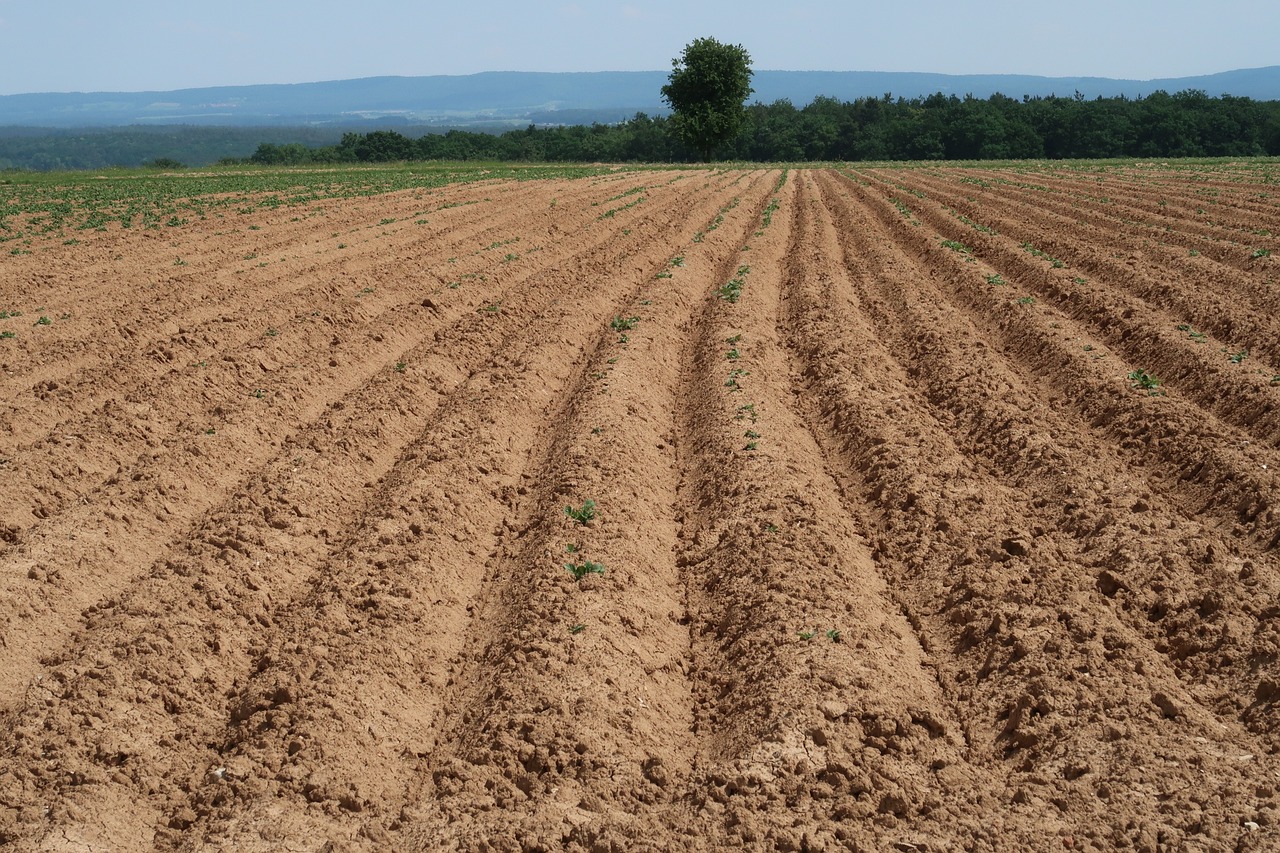
Soil erosion has a profound impact on eco-farming, and understanding these effects is crucial for anyone involved in sustainable agriculture. When we talk about erosion, we're not just discussing the loss of dirt; we're addressing the very foundation of our agricultural systems. The topsoil, which is rich in nutrients and essential for plant growth, is stripped away, leading to a cascade of issues that can threaten food security and biodiversity.
One of the most significant consequences of soil erosion is the loss of soil fertility. As the nutrient-rich top layer of soil is eroded, essential elements like nitrogen, phosphorus, and potassium are washed away. This depletion can severely affect crop yields, making it challenging for farmers to produce enough food to meet demand. Imagine trying to grow a garden in a pot with no soil; that’s what farmers face when their land loses its nutrient base. To combat this, eco-farmers must adopt innovative strategies to replenish soil fertility, such as using organic fertilizers, crop rotation, and cover crops that can restore nutrients naturally.
Moreover, soil erosion leads to water retention issues. Eroded soils often lose their ability to hold moisture, which is critical for crops, especially during dry spells. When heavy rains wash away the topsoil, what remains is often compacted and less capable of absorbing water. This situation creates a vicious cycle: without adequate water retention, crops are more susceptible to drought stress, which can further diminish yields. Farmers can implement conservation techniques, such as contour farming and terracing, to enhance water retention and improve resilience against climate variability. These methods not only help in managing water resources but also contribute to the overall health of the ecosystem.
In addition to these direct impacts, soil erosion can also disrupt the delicate balance of biodiversity within farming ecosystems. Healthy soil is home to a myriad of organisms, from earthworms to beneficial bacteria, all of which play vital roles in nutrient cycling and pest control. When erosion occurs, these organisms are often displaced or killed off, leading to a decline in biodiversity. This loss can have long-term effects on the ecosystem, making it less resilient to pests and diseases. To foster biodiversity, eco-farmers should consider practices that promote soil health, such as reduced tillage and the incorporation of diverse plant species.
Ultimately, the impact of soil erosion on eco-farming is a multifaceted issue that requires a comprehensive approach. Farmers need to be proactive in recognizing the signs of erosion and implementing sustainable practices that not only protect the soil but also enhance its fertility and biodiversity. By doing so, they can ensure the long-term viability of their farms and contribute to a more sustainable agricultural future.
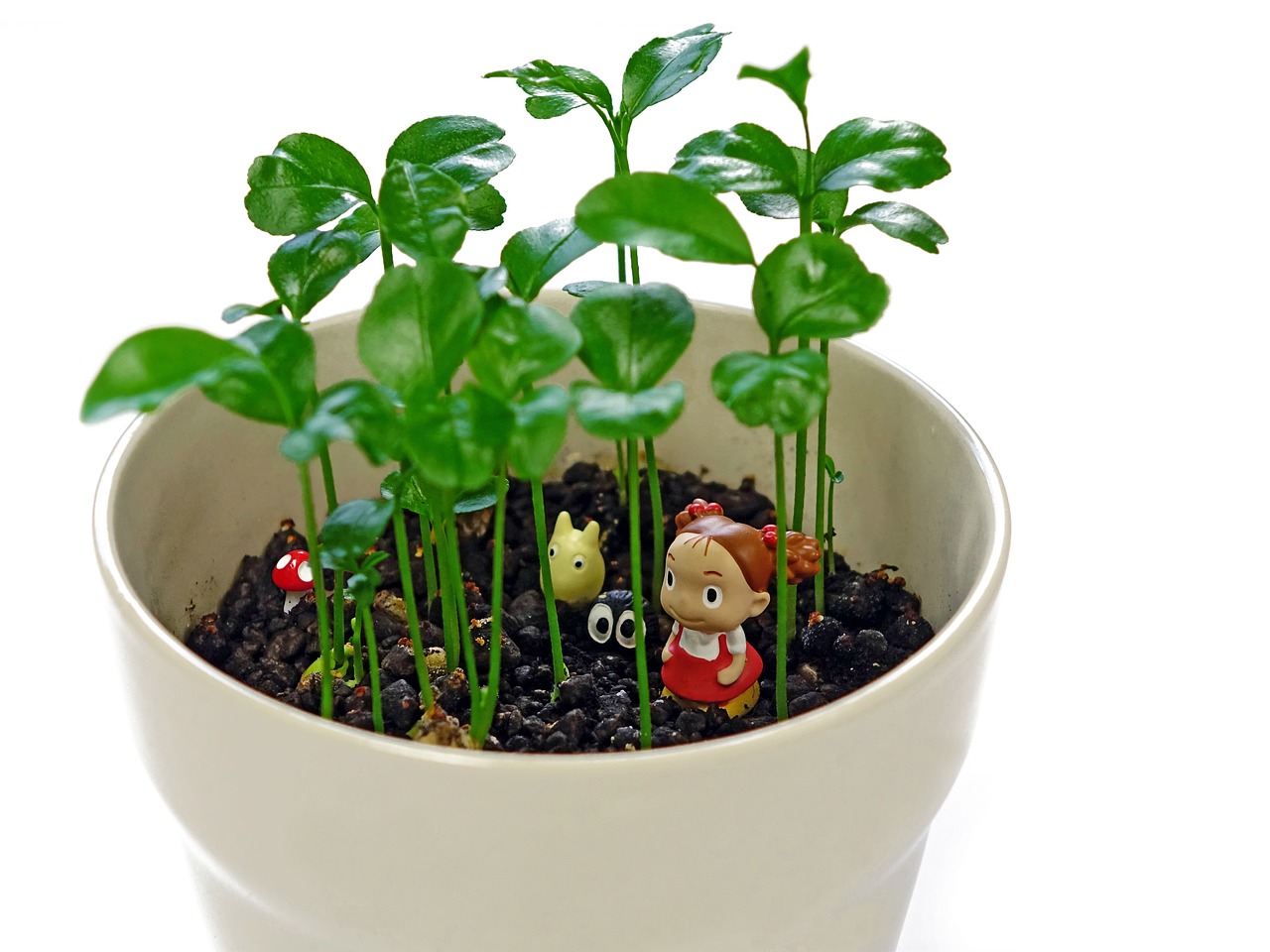
Soil erosion is not just a casual environmental hiccup; it’s a serious threat to agricultural productivity, particularly in eco-farming. When the top layer of soil—the most nutrient-rich and fertile part—is washed or blown away, farmers are left grappling with diminished crop yields. Imagine trying to bake a cake without flour; that’s what it feels like for farmers when they lose their soil fertility. The essential nutrients like nitrogen, phosphorus, and potassium, which are crucial for plant growth, get swept away, leaving behind a barren landscape that struggles to support life.
To understand the gravity of soil fertility loss, let’s break down how it impacts farming. The loss of nutrients not only affects the immediate crop yield but also has long-term repercussions on soil health. When the soil becomes depleted, it can lead to a cycle of dependency on chemical fertilizers, which, while providing a quick fix, can further degrade the soil quality over time. This dependency can create a vicious cycle where the soil becomes less and less fertile, requiring more and more inputs to produce the same yield.
Moreover, the economic implications are significant. Farmers may find themselves spending more on fertilizers and other soil amendments, which can cut into their profits. In a world where eco-farming aims to promote sustainability, the loss of soil fertility contradicts the very principles that underpin this farming method. It’s like trying to run a marathon with a stone in your shoe; you can do it, but it’s going to be painful and inefficient.
To tackle this issue, farmers can adopt several strategies to replenish soil fertility. These include:
Additionally, farmers can benefit from soil testing to understand their soil's nutrient profile better. This proactive approach allows them to tailor their fertilization practices to address specific deficiencies, making their eco-farming practices more effective. By investing in soil health today, farmers can ensure a more sustainable and productive tomorrow.
In conclusion, soil fertility loss due to erosion is a pressing issue that requires immediate attention. By understanding the causes and implementing effective strategies, farmers can combat this challenge and continue to thrive in eco-farming. After all, healthy soil is the foundation of healthy crops, and without it, the future of agriculture hangs in the balance.

When we talk about soil erosion, one of the most pressing concerns is its impact on water retention. Imagine your soil as a sponge; when it’s intact, it soaks up water beautifully, allowing plants to thrive. But when erosion strips away the topsoil, that sponge loses its ability to hold moisture. This leads to a cascade of problems for farmers, especially those committed to eco-farming practices.
So, what does this mean in practical terms? Eroded soils often struggle to retain water, which can result in drought stress for crops. This is particularly concerning in regions that already face water scarcity. Farmers may find themselves in a vicious cycle: as soil loses its ability to hold water, they have to rely more on irrigation, which can be both costly and unsustainable. It’s a bit like trying to fill a bucket with holes—no matter how much water you pour in, it just keeps draining out.
To combat these water retention issues, farmers can adopt several conservation techniques. Here are a few effective strategies:
In addition to these practices, it’s crucial for farmers to monitor their soil health regularly. Conducting soil tests can provide insights into nutrient levels and moisture retention capabilities. By understanding the specific needs of their land, farmers can tailor their approaches to maximize water retention and crop health.
Ultimately, addressing water retention issues is not just about improving crop yields; it’s about ensuring the sustainability of our agricultural systems. As we face the challenges of climate change and increasing food demand, preserving our soil’s ability to retain water is more important than ever. By implementing effective conservation techniques, farmers can create resilient ecosystems that support both their livelihoods and the environment.
Soil erosion is the process where the top layer of soil, which is vital for plant growth, gets removed due to natural forces like water and wind, or human activities. It's like peeling away the skin of a fruit, exposing the inner parts that aren't as healthy or productive.
Several factors contribute to soil erosion, including heavy rainfall, strong winds, and human actions like deforestation and poor farming practices. Think of it as a perfect storm where nature and human impact collide, leading to the degradation of our precious soil.
Soil erosion can lead to a significant decline in soil fertility and water retention, which are crucial for healthy crops. When the nutrient-rich topsoil is washed away, farmers face challenges in maintaining sustainable practices and ensuring food security.
Absolutely! There are several strategies to combat soil erosion, such as planting cover crops, implementing windbreaks, and practicing crop rotation. These methods help to protect the soil and maintain its health, much like a shield guarding against invaders.
Heavy rainfall can increase runoff, which washes away soil particles, especially on sloped land. Monitoring weather patterns allows farmers to take preventive measures during peak rainfall seasons, ensuring their soil remains intact.
In arid regions, strong winds can lift and carry away topsoil, leading to significant loss. Establishing windbreaks, such as rows of trees or shrubs, can help reduce wind speed and protect the soil, much like a barrier against harsh weather.
Long-term soil erosion can result in decreased crop yields, loss of biodiversity, and increased vulnerability to drought. This can create a ripple effect, impacting not just farmers but entire communities relying on agriculture for their livelihoods.
Farmers can enhance soil fertility by adding organic matter, such as compost or manure, and practicing crop rotation. These techniques help replenish nutrients and restore the soil's health, akin to giving it a nutritious meal to recover.
Conservation techniques such as contour farming, terracing, and mulching can significantly improve water retention in eroded soils. These practices create barriers that slow down water runoff and promote absorption, ensuring crops get the moisture they need.